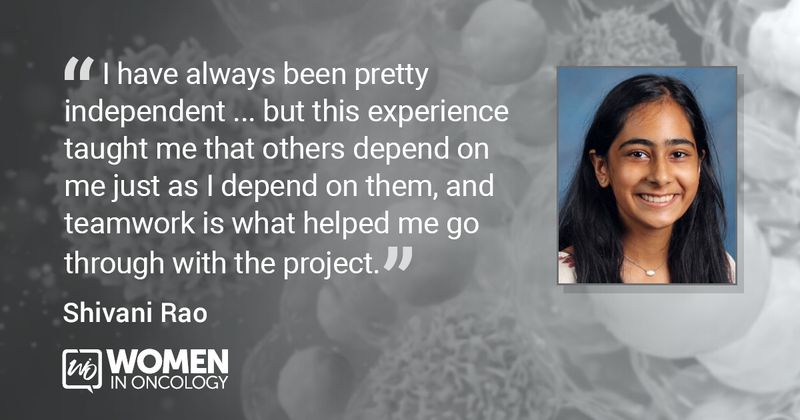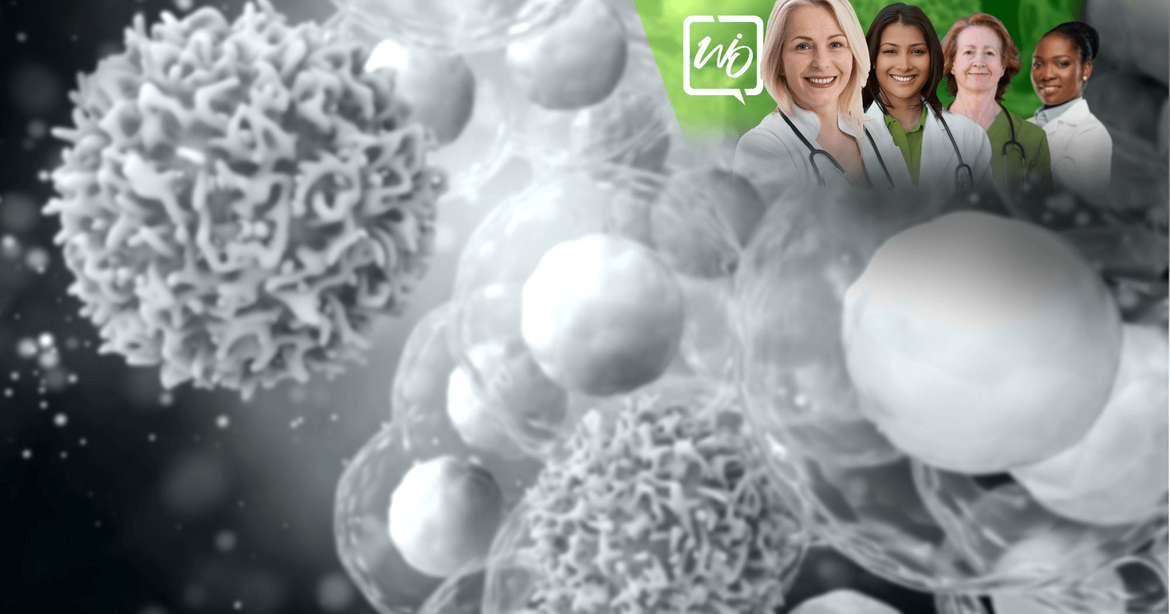Mentorship leads to research opportunity, ASH spotlight for high school student
Click Here to Manage Email Alerts
As they collaborated on a study — presented at the virtual ASH Annual Meeting and Exposition — of blood types and COVID-19 severity, Shivi Jain, MD, found herself emphasizing one noteworthy detail about her co-author, Shivani Rao.
“I had to keep reminding myself that I was working with a high school student,” Jain, assistant professor of internal medicine, director of diagnostic bone marrow services and co-director of the benign hematology program at Rush University Medical Center, told Healio. “She’s very hardworking and diligent. I just guided her.

“I would give Shivani a lot of the credit for the study of the correlation between blood group type and thrombosis in patients with COVID-19,” Jain added.
Rao, a student at Hinsdale Central High School in Hinsdale, Ill., became involved in hematologic research through a summer program called Science Inquiry and Research.
“Basically, every student gets the opportunity to choose their own research mentor,” Rao said in an interview with Healio. “I was originally going to do lab research at Rush with another doctor, but that fell through due to COVID. I was introduced to Dr. Jain, and she seemed very excited for me to join her, which made me even more eager to begin this journey. I am so grateful that she stepped in and helped me on such short notice.”
‘A very unique study’
When Rao joined Jain in her research, Jain was primarily analyzing thrombosis, including incidence of deep vein thrombosis and pulmonary embolism among patients with COVID-19. A few additional projects stemmed from this initial institutional review board, including projects on heparin-induced thrombocytopenia, pregnancy outcomes in COVID-19 and blood groups.
Rao generated the idea for the project she conducted with Jain, which involved looking at blood groups of hospitalized patients with COVID-19 who had had a thromboembolism.
“I was interested in the studies I had seen about blood group and COVID-19, and I thought that would be an interesting thing to study, so I pitched the idea to Dr. Jain,” Rao said. “Along the way, we came up with a more nuanced investigation of the topic and more ways to study the question.”
Jain commended Rao’s idea and said the project approached the study of COVID-19 and blood group from a new, interesting angle.
“This was a very unique study,” Jain said. “You don’t have too many studies that evaluated the correlation between blood group, COVID-19 and thrombosis.”
The timeline was tight for collecting the data and submitting the study to ASH, especially with COVID-19 clinics and two residents’ research projects demanding Jain’s time. However, Rao said she ultimately learned from the experience.
“I was a little bit pressed for time, but I think that motivated me more,” she said. “I have always been pretty independent, working on my own schedule, but this experience taught me that others depend on me just as I depend on them, and teamwork is what helped me go through with the project.”
Jain’s guidance proved essential, Rao said.
“I was very inexperienced and had never done research apart from your run-of-the-mill high school science experiments, such as pennies and water droplets, for example,” she said. “To have someone like Dr. Jain backing me the entire time, telling me where to go and pushing me in the right direction, was just what I needed.”
Mistaken for an MD
Rao admitted that she was nervous about the prospect of having to answer questions from the moderator and audience after the prerecorded video of her presentation was shown during ASH.
“I had originally thought Dr. Jain would be there with me — virtually, of course — but I found out that day that they would only let the presenter answer the questions. So, it was just me on screen,” Rao said.
Jain assured Rao that she could do it and texted her a photo of Wonder Woman for encouragement, Rao said.
The questions posed by the hematologists were difficult, according to Rao, who beforehand had to correct the woman taking attendance when she referred to the high schooler as “Dr. Rao.”
“It made me laugh, but I couldn’t say I hated being referred to as ‘Dr. Rao,’” she said.
“The audience threw questions at me that they would ask any experienced hematologist or researcher, and I fumbled a bit but picked up quite a few tips about the direction of my future studies from the people who asked questions,” Rao said.
A promising future
Having distinguished herself with this high-profile research contribution, Rao would seem to be paving the way for a future in science. However, this multitalented student, who also is a skilled pianist and a member of the Model UN team at her school, is still weighing her options.
“I honestly don’t know what field I want to go into, but this experience over the summer has really been eye-opening for me,” she said. “It’s taught me that I really like research. Dr. Jain has been instrumental in helping me discover new opportunities I never would have found on my own. She’s so passionate about her work and serving/lifting up others like me, and that inspires me every day.”
According to Jain, that feeling is decidedly mutual. In a year marked by many unforgettable events, she said working with Rao has been a highlight.
“There are so many things we all balance and juggle, but there are so few things that really bring us joy,” she said. “This has been one of those experiences. I’m happy I was able to help give Shivani this platform, so that everyone can appreciate and acknowledge her work. That’s my joy. That’s my win.”
For more information:
Shivi Jain, MD, can be reached at shivi_jain@rush.edu.

